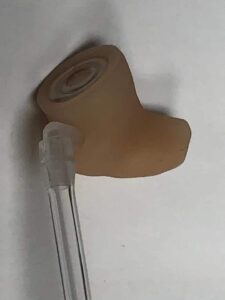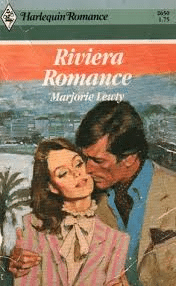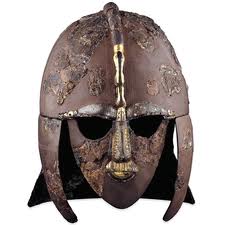This is a continuation of a previous post where the romantic nature of Musicians’ earplugs and a neat equation was introduced….
Musicians’ earplugs have been in use since 1988 when they were first introduced. An invention of Elmer Carlson (of twin tube fame), they were first commercialized and marketed by Etymotic Research (now Lucid Audio), and since then commercialized by several other manufacturers. Musicians’ earplugs provide a flat attenuation (or insertion loss) from 63 Hz to over 16,000 Hz so that music still sounds like music- the attenuation is the same for the bass notes, the mid-range notes, and the treble notes.
It is as close to a “transparent” response as is possible while still providing adequate attenuation- the musician frequently forgets that they are wearing anything.
But it doesn’t stop there. What about musicians who don’t have the “average” ear canal length and associated 2700 Hz resonance, which is an implicit assumption of the Musicians’ earplugs? How are the earplugs modified for long eared or short eared individuals who have ear canal resonances that are less, or more, than 2700 Hz?
One of my favorite equations is F α area/LoVe. Although this sounds romantic, area is the cross sectional area of a tube such as a vent or a sound bore, and LoVe is the length of the tube (Lo) and Ve is the remaining “equivalent” volume that is not of the tube not obstructed by the earmold. Ignoring the Ve portion of this equation, to increase the resonance frequency F, one needs to make the bore wider (and/or decrease the length Lo), and to decrease the resonant frequency F, one needs to make the bore narrower (and/or increase the length Lo).
A long ear canal person with a resonant frequency of only 2400 Hz would need a Musicians’ earplug with a narrower and longer bore than average, and conversely, a short ear canal person with a resonant frequency of 3000 Hz would need a Musicians’ earplug with a wider and shorter bore than average. These earmold dimension modifications will ensure a flatter response near the top end of the piano keyboard but there will be slight deviations away from a flat response just below and just above the resonant frequency.
Clinically for non-2700 Hz resonance musicians, I let the musician “play” with the earmold by providing them with a short piece of #16 hearing aid tubing (1.3 mm ID), and a #13 piece of hearing aid tubing (1.96 mm ID). This combination is placed in the sound bore and the musician can try out each of the three options (non-modified, only #13 tubing, or both; #16 tubing nicely fitting inside the #13 tubing) in the sound bore.
It may not be perfect for the higher frequency harmonics, but most of the higher level harmonics will be treated appropriately.
BUT…. Another modification that can be very useful for bass acoustic instruments such as the cello or bass is an “acoustic monitor”. This is a stethoscope for the large stringed instruments. Frequently cellists and bass players cannot hear their own instrument in the cacophony of the other orchestral instruments. It is not usual to see a cellist or bass player lean their heads into the neck of their instruments to hear better by bone conduction. The acoustic monitor serves to amplify the lower frequency elements of their instrument (below 1000 Hz) by up to 20 dB; just like a stethoscope helps a medical professional listen to hear beats, pulses, and heart murmurs.

Dangle 4 feet of standard #13T tubing down and tape it to the rear of the cello or bass, or insert the end into one of the stylized f-holes on the front of the instrument
Four feet of #13T hearing aid tubing ($2.00) is connected to the left sided Musicians’ earplugs via a 90 degree elbow ($1.50) routed through a 1.5 mm diameter vent. In a soft silicon mold, when a 1.5 mm vent is ordered (and a 1.5 mm drill bit is used), the diameter actually snaps back to about 1.0 mm or even less; a diameter that has minimal loss of the attenuation, except for the very low frequency sounds. With a 90 degree elbow in place, the vent hole opens up to be able to transduce the low-frequency sounds to the musician. The other end of the #13T tubing is taped to the back of the cell or bass, dangles in the stylized f-holes on the front of the instrument, or paper clipped to the tailpiece (the black part where the strings are connected) near the bottom of the instrument.
 Now, I checked with my wife, and I have been told that there is absolutely nothing romantic about this. Well, I have to disagree! There is nothing more romantic than receiving an acoustic monitor for Valentine’s Day from your beloved husband…. And next year, she gets a full set of wrenches. Talk about romantic!!
Now, I checked with my wife, and I have been told that there is absolutely nothing romantic about this. Well, I have to disagree! There is nothing more romantic than receiving an acoustic monitor for Valentine’s Day from your beloved husband…. And next year, she gets a full set of wrenches. Talk about romantic!!








Seeking recommendation for hearing aid for singer and piano.
Dear Dr Chasin,
am an amateur choral singer (plus range of songs – Gershwin, musicals, some classical) and am trying to find the best hearing aid to help me correct newly experienced distortion.
I am finding it difficult to land in the key, and hear overtones / harmonics I didn’t hear before. This also occurs listening to radio etc.
I have practiced a lot this fall for choral work and managed to improve finding my pitch. I also routinely can’t hear conductor voice.
I was born with left side deafness. At 38, I suddenly experienced loss of speech understanding on right ear. I have worn phonak bicross, but it is very old.
Finally after identifying best hearing aid for me, I will follow through with aural rehab and voice lessons.
I live in syracuse, NY and am seeking an ENT (I am also having new speech problems being explored by neurology) with experience with musicians.
Any information you can provide, including “best” hearing aid for singers, and practitioners in my area would be greatly appreciated.
Thank you,
Kate Lucey
315-750-5388
Hi Kate- your audiologist should be able to assist in selecting the correct hearing aids for you- you can appreciate that it would be simplistic of me to recommend a single brand or model of hearing aid. The correct recommendation would be based on many factors and that is why you should see someone who has evaluated you.
Marshall